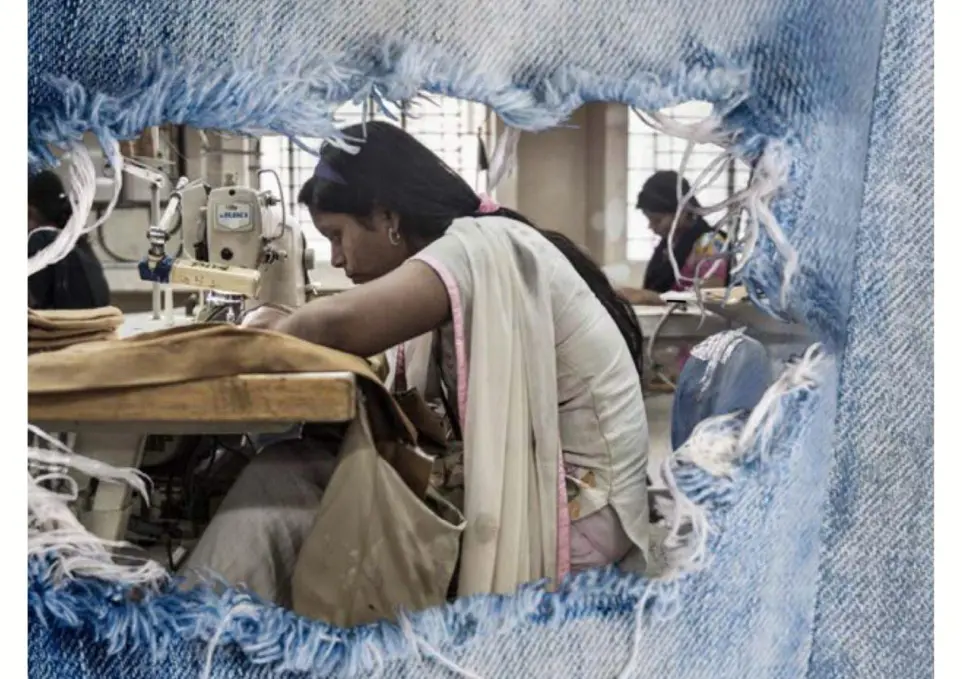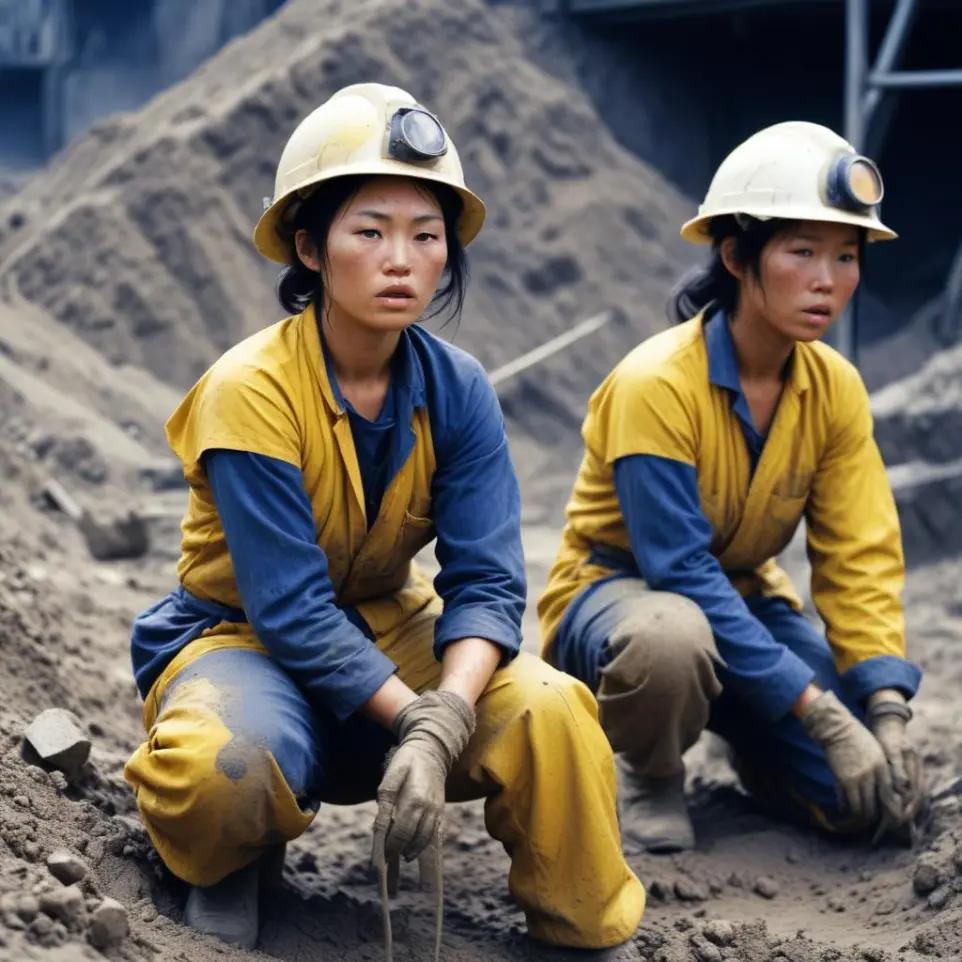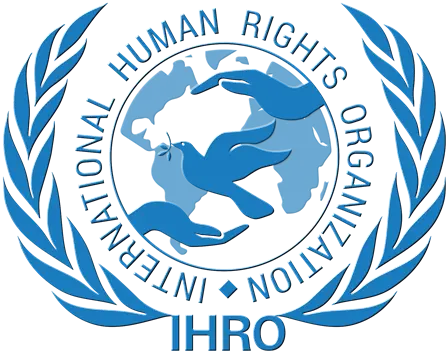





Fighting Forced Labor: How to Combat One of the Worst Forms of Labor Abuse
Learn how to combat one of the worst forms of labor abuse in our main article, "Forms of Labor Abuse." Join us in this mission to promote justice and equity for all!
Forced labor is a serious violation of human rights and affects millions of people around the world. It refers to situations in which people are forced to work under threat, coercion, or without their consent, often in inhumane conditions. It is a problem that requires urgent attention and collective action to eradicate it.
Forced labor manifests itself in extremely serious forms of labor abuse. Among the worst forms are:
- Child exploitation: Involves children forced to work in dangerous conditions, depriving them of education, healthcare, and a safe childhood.
- Human trafficking: Recruitment and transportation of individuals through threats, deception, or coercion to subject them to forced labor, prostitution, or other exploitation.
- Bonded labor: Situations where people are trapped due to debt, forcing them to work without the ability to escape.
- Exploitation in specific sectors: In industries such as agriculture, mining, or textiles, where workers face grueling hours, unhealthy conditions, and little or no pay.
These abuses often occur in contexts of extreme poverty, vulnerability, or a lack of effective labor laws. Recognizing these problems and working to eradicate them is vital to protecting human rights.
Introduction to Forced Labor
Forced labor refers to any form of work or service that a person performs under the threat of any penalty and for which they have not volunteered. Forms of labor abuse that may be associated with forced labor include debt bondage, human trafficking for labor exploitation, sexual exploitation, modern slavery, and child exploitation.
Forced labor has a devastating impact on human rights worldwide. People who are victims of forced labor face inhumane working conditions, long hours, lack of fair pay, physical and psychological abuse, and a complete lack of freedom and autonomy. These conditions violate their fundamental rights and perpetuate a cycle of poverty and inequality.
Furthermore, forced labor contributes to the erosion of human dignity, the denial of individual freedom, and the perpetuation of unequal power structures. The lack of respect for human rights in the workplace undermines the foundations of a just and equitable society, and it is critical to address this problem urgently and decisively.
It is essential to raise awareness of the impact of forced labor on human rights and to work collaboratively at the national and international levels to eradicate these abusive practices and promote fair and rights-respecting work environments.
According to the International Labor Organization (ILO), an estimated 25 million people worldwide are victims of forced labor, including situations of labor exploitation, debt bondage, and human trafficking for labor exploitation. This alarming figure highlights the magnitude of the problem and the need for concrete measures to address it.
Furthermore, it is estimated that forced labor generates illegal profits of approximately $150 billion annually, demonstrating the economic dimension of this problem and the need to adopt effective measures to dismantle labor exploitation networks.
These figures highlight the urgency of addressing forced labor and its various forms of labor abuse globally. It is essential to work in partnership with governments, international organizations, employers, and workers to eradicate these practices and promote fair, equitable, and human rights-respecting work environments.
Anti-Forced Labor Legislation and Regulations
International conventions related to forced labor constitute a crucial legal framework for addressing this form of labor abuse. The 1930 Forced Labor Convention, adopted by the International Labor Organization (ILO), is a fundamental instrument that prohibits forced or compulsory labor in all its forms. Furthermore, the 2014 Forced Labor Protocol further strengthens the provisions of the 1930 convention by requiring member states to take effective measures to prevent and eliminate forced labor, as well as to provide protection and remedies for victims.
These international conventions establish minimum standards that countries must meet to eradicate forced labor and provide a solid legal framework to guide national policies and actions to combat this human rights violation.
In the words of the ILO: Forced labor is a violation of human rights and an unacceptable practice that deprives people of their dignity and freedom.
At the national level, the effectiveness of preventing forced labor depends largely on the enactment and implementation of specific laws and regulations. Countries must establish legal frameworks that prohibit forced labor, protect workers, and ensure companies' due diligence in preventing this practice.
The effectiveness of national regulations is reflected in governments' ability to inspect and enforce labor laws, as well as authorities' ability to investigate and punish violators. Furthermore, it is crucial to have mechanisms in place to provide protection and support to victims of forced labor, ensuring they receive the necessary assistance and have access to effective remedies.
The challenge lies in ensuring that national laws and regulations are effective and in line with international standards, which requires continued commitment from governments, civil society organizations, and the private sector.
There are various global initiatives and programs aimed at combating forced labor and protecting workers' rights around the world. The 8.7 Alliance, for example, is a global partnership that brings together governments, employers, unions, civil society organizations, and international organizations with the goal of achieving Sustainable Development Goal 8.7, which seeks to eradicate child labor, modern slavery, and forced labor by 2030.
Similarly, programs such as the ILO's Special Action Programme on Forced Labor (SAP-FL), implemented in multiple countries, seek to strengthen the capacities of Member States to prevent and eliminate forced labor by promoting cooperation among different actors and encouraging the implementation of concrete policies and measures.
These global initiatives are essential for coordinating efforts, sharing good practices, and promoting a comprehensive approach to combating forced labor, recognizing that international collaboration is essential to addressing a problem that transcends national borders.
Factors that perpetuate forced labor
Forced labor is one of the worst forms of labor abuse and is closely linked to poverty and inequality. People living in extreme poverty, especially in areas where economic inequality is high, are more likely to be victims of forced labor. Lack of economic and educational opportunities, along with discrimination, contribute to people's vulnerability to this form of labor exploitation.
Gender inequality also plays a significant role in perpetuating forced labor. Women and girls are disproportionately affected, either through human trafficking for labor or sexual exploitation, or through the imposition of abusive working conditions in various sectors.
Combating forced labor requires vigorously addressing poverty, inequality, and discrimination, as well as ensuring fair and equitable working conditions for all workers, regardless of their gender, ethnicity, or economic status.
Labor exploitation manifests itself in various ways in specific sectors, such as agriculture, manufacturing, construction, mining, and domestic work. In agriculture, for example, workers may be forced to labor in deplorable conditions, with long hours and inadequate wages.
In the textile industry, numerous cases of forced labor have been documented, where workers, mostly women, are subjected to long hours, unsafe conditions, and minimal wages, often in exploitative and abusive environments.
Cases of forced labor have been reported in the construction sector, both nationally and internationally, where migrant workers are especially vulnerable to exploitation, facing extremely harsh and dangerous working conditions.
These are just a few examples of labor exploitation in specific sectors and highlight the urgent need to take measures to prevent and eradicate forced labor in all its forms.
Forced labor not only has economic and social repercussions but also serious psychological and physical consequences for affected workers. Prolonged exposure to abusive and coercive working conditions can result in high levels of stress, anxiety, depression, and other mental disorders.
Furthermore, workers who are victims of forced labor face a heightened risk of occupational injuries and illnesses due to the unsafe and dangerous conditions in which they are forced to work. From musculoskeletal injuries to respiratory problems and stress-related disorders, the physical consequences of forced labor can be devastating to workers' health.
It is critical to address not only the abusive working conditions themselves, but also to provide comprehensive support to workers who have been victims of forced labor, including medical care, psychological counseling, and resources for their physical and mental recovery.
Alternatives and Solutions to Eradicate Forced Labor
Companies play a crucial role in preventing forced labor in their supply chains. It is essential that they assume responsibility for ensuring that forced labor practices are not tolerated at any stage of production. This involves conducting a thorough audit of their suppliers to identify potential cases of labor exploitation. Furthermore, companies must establish clear policies prohibiting forced labor and ensure that they are enforced at all stages of the supply chain.
Transparency is a key factor in this process. Companies must be transparent about the origin of their products and the working conditions under which they are produced. This not only promotes accountability but also provides consumers with the information they need to make ethical purchasing decisions. Companies can also collaborate with human rights organizations and unions to strengthen monitoring and reporting mechanisms for potential cases of forced labor in their supply chains.
Ultimately, companies that actively engage in the prevention of forced labor not only contribute to the protection of human rights but also strengthen their reputation and build trust among consumers and society at large.
Empowering workers and unions plays a critical role in the fight against forced labor. It is essential that workers know their rights and are informed about the warning signs that indicate the presence of forced labor. Trade union organizations have a responsibility to provide training and support to workers so they can identify and report situations of labor abuse.
Furthermore, strengthening union representation and collective bargaining are key tools in combating forced labor. Unions can act as advocates for workers' rights, advocating for fair working conditions and participating in the development of company policies that promote a safe and respectful work environment.
Collaboration between trade unions, civil society organizations, and government authorities is essential to ensure that cases of forced labor are adequately investigated and sanctioned. Furthermore, recognition of the right to freedom of association and the right to collective bargaining are fundamental pillars for empowering workers and strengthening their capacity to resist and report forced labor.
Technological innovations offer significant opportunities for the eradication of forced labor. The implementation of tracking and monitoring systems in supply chains, based on technologies such as blockchain, allows for greater transparency and traceability of products, making it difficult to conceal abusive practices.
Furthermore, digital applications and platforms can provide secure channels for workers to confidentially report abuses and request help. These tools can be especially useful in contexts where workers face barriers to accessing formal reporting mechanisms, giving a voice to those who might otherwise remain anonymous.
Artificial intelligence can also play a significant role in the early identification of potential forced labor situations, analyzing large volumes of data to detect patterns and anomalies that could indicate labor abuses. These technological innovations, combined with corporate commitment and the active participation of workers, have the potential to radically transform the fight against forced labor globally.
Social and economic impact of eradicating forced labor
Forced labor is one of the worst forms of labor abuse, affecting millions of people around the world. Eradicating this practice not only has a positive impact on the lives of workers but also significantly contributes to improving working conditions and the quality of life of people in general.
Eliminating forced labor opens the door to creating safer, fairer, and more equitable work environments. Workers can enjoy decent working conditions, which translates into greater job satisfaction, better physical and mental health, and greater motivation to perform their jobs. Furthermore, eliminating forced labor promotes equal opportunities and respect for fundamental human rights, laying the foundation for a more just and equitable society.
Furthermore, eradicating forced labor has positive effects on the global economy. By ensuring fair working conditions, productivity and efficiency in the workplace are fostered. Workers who are not subjected to exploitative labor situations have the opportunity to contribute more meaningfully to economic growth and sustainable development, which in turn benefits communities and the economy as a whole.
Conclusions and Call to Action
The fight against forced labor is a challenge that requires the collaboration of governments, businesses, and civil society at the global level. Governments play a fundamental role in creating and enforcing laws that prohibit forced labor and in allocating resources for the inspection and monitoring of working conditions. Businesses, for their part, have a responsibility to ensure that their supply chains are free of forced labor by implementing policies and practices that promote respect for human rights. Civil society plays a crucial role in reporting cases of forced labor, advocating for worker protection, and collaborating in the identification and eradication of these abusive practices.
Collaboration between these actors is essential to generating a significant impact on the eradication of forced labor. The implementation of coordinated strategies, the sharing of information and good practices, as well as the promotion of transparency and accountability, are key elements in this fight. Furthermore, awareness-raising and education about labor rights are essential to promoting a culture of respect and dignity in the workplace.
It is necessary to foster effective partnerships between governments, businesses, and civil society to strengthen worker protection mechanisms and ensure that forced labor is eradicated in all its forms.
Individual and collective commitment is essential to promoting abuse-free work environments. Workers have the right and responsibility to demand fair and safe working conditions, as well as to report any form of forced labor or abuse in the workplace. The active participation of workers in defending their rights is essential to preventing and eradicating forced labor.
Similarly, consumers play a crucial role in demanding that companies ensure that their products and services are not linked to forced labor. Consumer pressure can motivate companies to adopt responsible practices in their supply chains, thus contributing to the elimination of forced labor globally.
Promoting a culture of respect for human rights in the workplace is the responsibility of all stakeholders. Individual and collective commitment is essential to generating a significant impact on the prevention and eradication of forced labor in all its forms.
Despite progress in the fight against forced labor, significant challenges remain that must be addressed to achieve its eradication globally. The lack of effective implementation of laws and policies, the scarcity of resources for the inspection and monitoring of working conditions, and the complexity of global supply chains are some of the challenges we face.
Furthermore, the vulnerability of certain groups of workers, such as migrants, domestic workers, and people living in poverty, requires special attention to ensure their protection from forced labor. International collaboration, cooperation between countries, and the promotion of international labor standards are essential to effectively address these challenges.
The next steps in eradicating forced labor include strengthening legislation and its implementation, strengthening inspection and monitoring mechanisms, promoting transparency in supply chains, and raising awareness about labor rights. These efforts must be accompanied by a sustained commitment from governments, businesses, civil society, and the international community to ensure that forced labor is eliminated in all its forms.
What measures can be taken to prevent forced labor?
Preventing forced labor requires coordinated efforts at the local, national, and international levels. Some key measures include:
- Strengthening labor laws: Establish, implement, and enforce laws that prohibit forced labor. This includes severe penalties for violators and legal protections for victims.
- Education and awareness: Inform vulnerable communities about their labor rights, as well as the risks and signs of forced labor. Education empowers people to make informed decisions.
- Monitoring in high-risk sectors: Monitor industries prone to forced labor, such as agriculture, mining, domestic work, and construction. Implement labor audits and regular monitoring.
- Economic empowerment: Provide training programs and employment opportunities for vulnerable groups. By reducing poverty, the circumstances that lead to forced labor are reduced.
- International collaboration: Support global initiatives such as those of the International Labor Organization (ILO) to share resources, strategies, and best practices in combating this problem.
- Eliminating debt bondage: Ensure that employers do not use debt to control workers. This requires strict regulations on labor loans and fair contracts.
- Victim support: Create safe mechanisms for victims to report abuse and guarantee their access to legal, psychological, and financial assistance.
- Corporate commitment: Promote corporate social responsibility in companies, ensuring that their supply chains are free of forced labor.
These actions require the active participation of governments, businesses, non-governmental organizations, and citizens. Small, local initiatives can significantly contribute to global change.
Forced labor is deeply connected to human rights, as it violates several fundamental principles established in international instruments such as the Universal Declaration of Human Rights and the conventions of the International Labor Organization (ILO). These are some of the most notable connections:
- Right to freedom: Forced labor involves coercion and the inability to freely decide about employment, which represents a direct violation of the right to liberty and personal autonomy.
- Right to fair working conditions: Victims of forced labor often face grueling hours, minimal or no wages, and inhumane conditions, violating their right to decent work.
- Right to safety and health: In situations of forced labor, people are often exposed to hazardous environments that threaten their physical and mental well-being.
- Right to freedom from slavery or servitude: Forced labor is a modern form of slavery that violates this fundamental right.
- Right to education and personal development: In the case of forced child labor, children are deprived of their right to education, limiting their future opportunities and perpetuating cycles of poverty.
Forced labor is not only a labor abuse, but also a denial of human dignity and the basic rights that all people should enjoy. Combating this practice requires a global commitment from governments, businesses, and society as a whole.

